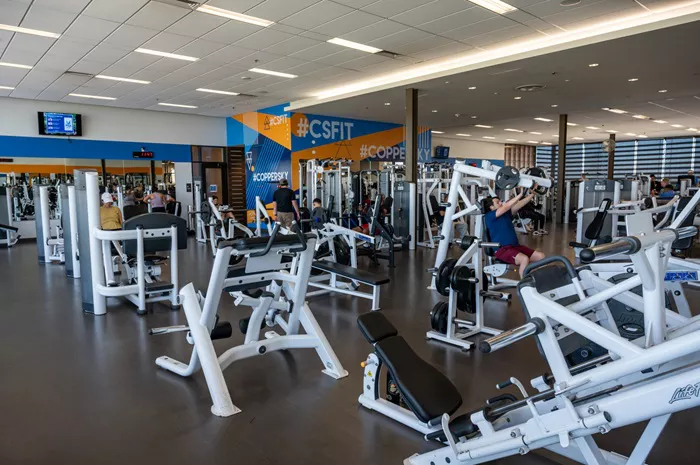Cardiorespiratory endurance, often referred to as cardiovascular endurance, aerobic capacity, or stamina, is a critical component of overall fitness. It represents the ability of the heart, lungs, and circulatory system to supply oxygen to working muscles during sustained physical activity. Improving cardiorespiratory endurance enhances overall health, boosts energy levels, and can significantly reduce the risk of chronic diseases. This article delves into the best ways to improve cardiorespiratory endurance, exploring various training methods, dietary considerations, and lifestyle changes.
Understanding Cardiorespiratory Endurance
Before exploring improvement methods, it’s essential to understand what cardiorespiratory endurance is and why it matters. Cardiorespiratory endurance refers to the efficiency with which the body delivers oxygen and nutrients needed for muscular activity and the capability to sustain prolonged exercise. It is a crucial indicator of heart and lung health and is measured through VO2 max, which is the maximum amount of oxygen the body can utilize during intense exercise.
Benefits of Enhanced Cardiorespiratory Endurance:
1. Improved heart health
2. Enhanced lung capacity
3. Better metabolic function
4. Increased energy levels
5. Reduced risk of chronic diseases such as hypertension, diabetes, and heart disease
6. Enhanced mental health and cognitive function
Methods to Improve Cardiorespiratory Endurance
Improving cardiorespiratory endurance involves a combination of different types of aerobic exercises, consistent training, and appropriate recovery. Below are some of the most effective methods:
1. Aerobic Exercise
Aerobic exercises, also known as cardio, are the most direct way to improve cardiorespiratory endurance. These exercises increase heart rate and breathing, enhancing the efficiency of the cardiovascular and respiratory systems.
Types of Aerobic Exercises:
Running and Jogging: Simple and accessible, running and jogging can be performed at various intensities. Interval running, where periods of high-intensity running alternate with rest or low-intensity jogging, is particularly effective.
Cycling: Both outdoor cycling and stationary biking are excellent for improving endurance. Cycling can be less impactful on joints compared to running, making it suitable for individuals with joint issues.
Swimming: Swimming is a full-body workout that significantly improves cardiorespiratory endurance. The resistance of water makes it an effective form of exercise for all fitness levels.
Rowing: Rowing provides a comprehensive workout that engages multiple muscle groups while also boosting cardiovascular health.
Brisk Walking: For those new to exercise or with certain physical limitations, brisk walking is a low-impact way to enhance endurance.
2. High-Intensity Interval Training (HIIT)
HIIT involves short bursts of intense exercise followed by brief rest periods. This type of training is highly effective for improving VO2 max and cardiorespiratory endurance in a shorter amount of time compared to steady-state cardio.
Benefits of HIIT:
Time-efficient: Delivers results in shorter sessions
Enhances metabolic rate
Improves cardiovascular and muscular endurance
Can be tailored to various fitness levels
Sample HIIT Routine:
Warm-up: 5 minutes of light cardio (e.g., jogging or dynamic stretching)
High-intensity phase: 30 seconds of sprinting or high-speed cycling
Recovery phase: 1 minute of walking or slow cycling
Repeat the high-intensity and recovery phases 8-10 times
Cool down: 5 minutes of light cardio and stretching
See Also: 5 Key Facts About Mental Health
3. Long, Slow Distance Training (LSD)
LSD training involves prolonged periods of exercise at a steady, moderate pace. This method is ideal for building foundational endurance and increasing the efficiency of the cardiovascular system over time.
Benefits of LSD Training:
Builds a strong aerobic base
Enhances muscular endurance
Reduces risk of overtraining due to lower intensity
Sample LSD Routine:
Choose an activity (e.g., running, cycling, swimming)
Maintain a steady pace that allows for conversation (typically 60-70% of maximum heart rate)
Aim for a duration of 60 minutes or more
Gradually increase duration as endurance improves
4. Cross-Training
Cross-training involves incorporating different types of aerobic exercises into a workout regimen. This approach prevents monotony, reduces the risk of injury from overuse, and ensures balanced development of various muscle groups.
Benefits of Cross-Training:
Reduces the risk of injury
Prevents boredom and keeps motivation high
Provides comprehensive fitness benefits
Targets different muscle groups
Sample Cross-Training Plan:
Monday: Running (45 minutes)
Tuesday: Swimming (30 minutes)
Wednesday: Cycling (60 minutes)
Thursday: Rest or light activity (e.g., walking or yoga)
Friday: Rowing (40 minutes)
Saturday: HIIT (20 minutes)
Sunday: Brisk walking or hiking (90 minutes)
Diet and Nutrition
Proper nutrition plays a crucial role in improving and maintaining cardiorespiratory endurance. A well-balanced diet provides the necessary energy, supports recovery, and ensures overall health.
Key Nutritional Considerations:
Carbohydrates: Primary energy source for aerobic activities. Opt for complex carbs such as whole grains, fruits, and vegetables.
Proteins: Essential for muscle repair and growth. Include lean meats, dairy, beans, and legumes.
Fats: Important for sustained energy. Choose healthy fats like avocados, nuts, seeds, and olive oil.
Hydration: Adequate fluid intake is critical. Drink water throughout the day and consider electrolyte-rich beverages during prolonged exercise.
Vitamins and Minerals: Support overall health and energy metabolism. Ensure a diet rich in vitamins A, C, D, and B-complex, along with minerals like iron, calcium, and magnesium.
Recovery and Rest
Recovery is an often overlooked but vital aspect of improving cardiorespiratory endurance. Proper rest and recovery allow the body to heal, adapt, and grow stronger.
Key Recovery Strategies:
Sleep: Aim for 7-9 hours of quality sleep per night.
Active Recovery: Engage in low-intensity activities such as walking, stretching, or yoga on rest days.
Nutrition: Consume a balanced meal with carbohydrates and proteins post-exercise to aid recovery.
Hydration: Rehydrate adequately after workouts.
Massage and Foam Rolling: Help alleviate muscle soreness and improve circulation.
Listening to Your Body: Avoid pushing through pain and allow ample time for recovery when needed.
Monitoring Progress
Tracking progress is crucial for staying motivated and ensuring continuous improvement. There are several ways to monitor cardiorespiratory endurance:
Methods to Track Progress:
VO2 Max Testing: Measures the maximum oxygen uptake and is a direct indicator of cardiorespiratory fitness. Available through specialized fitness centers.
Heart Rate Monitoring: Track heart rate during exercise to ensure you are working within the target zones.
Fitness Apps and Wearables: Utilize technology to monitor distance, pace, and overall performance.
Regular Assessments: Conduct periodic assessments such as timed runs, cycling distances, or other standardized tests to gauge improvement.
Overcoming Common Challenges
Improving cardiorespiratory endurance can present several challenges. Recognizing these and implementing strategies to overcome them is essential for success.
Common Challenges and Solutions:
Lack of Time: Opt for shorter, high-intensity workouts like HIIT when time is limited.
Boredom: Mix up routines and try new activities to keep things interesting.
Plateaus: Gradually increase intensity or duration, and incorporate interval training to push past plateaus.
Injuries: Focus on proper form, cross-train to avoid overuse injuries, and prioritize recovery.
Motivation: Set specific, achievable goals and track progress regularly.
Lifestyle Considerations
Beyond exercise and nutrition, certain lifestyle factors can significantly influence cardiorespiratory endurance.
Healthy Lifestyle Habits:
Stress Management: Chronic stress can impair recovery and performance. Incorporate relaxation techniques such as meditation, deep breathing, or yoga.
Smoking Cessation: Smoking severely hampers lung capacity and cardiovascular health. Seek support to quit smoking if necessary.
Limit Alcohol Consumption: Excessive alcohol can interfere with performance and recovery.
Maintain a Healthy Weight: Excess weight can strain the cardiovascular system, making endurance activities more challenging.
Conclusion
Improving cardiorespiratory endurance is a multifaceted process involving consistent aerobic exercise, strategic training methods like HIIT and LSD, balanced nutrition, adequate recovery, and healthy lifestyle choices. By incorporating these elements into a comprehensive fitness plan, individuals can enhance their cardiorespiratory fitness, leading to better health, increased energy levels, and a higher quality of life. Remember, the journey to improved endurance is gradual and requires patience, dedication, and a willingness to adapt and refine strategies along the way.
[inline_related_posts title=”You Might Be Interested In” title_align=”left” style=”list” number=”6″ align=”none” ids=”9825,9818,9677″ by=”categories” orderby=”rand” order=”DESC” hide_thumb=”no” thumb_right=”no” views=”no” date=”yes” grid_columns=”2″ post_type=”” tax=””]































